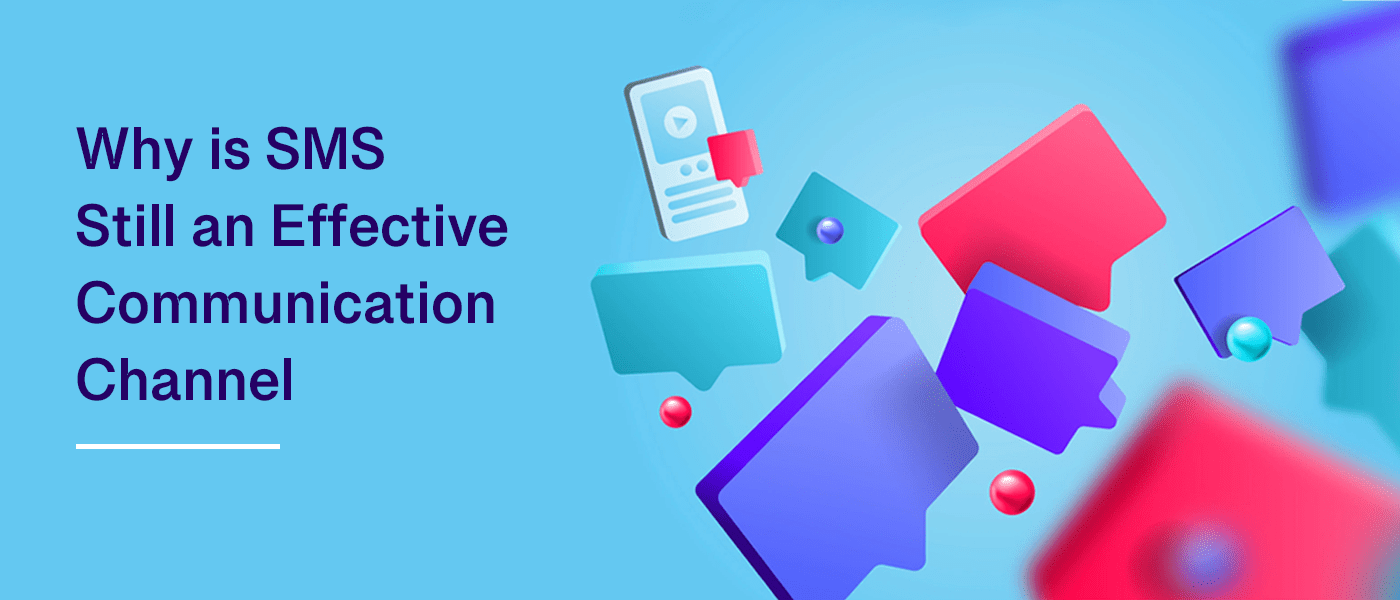
Why SMS Is Still An Effective Channel In 2023
Although in-app notifications and new-age conversational messaging channels have been gaining popularity, SMS still a critical role in an omnichannel strategy given its unmatched reach, reliability and effectiveness. With over 18.5 Billion messages sent worldwide (of which 1 Billion are sent in India) every day, SMS is still the best channel to communicate with customers and prospects.
In this blog post, we’ll share the multiple reasons that make SMS an effective channel and a few tips to write SMS copy that can help you drive conversions and boost revenue
Why is SMS still effective?
- SMS is ubiquitous – Text messaging application is built into every mobile phone, even basic cell phones, making it easier for businesses to reach areas with remote connectivity.
- Quick delivery: Your customers will get your message as soon as it’s sent, regardless of internet connectivity.
- Familiar communication channel– Nearly everyone in the world with a mobile phone knows what a text is, how to open it, read it, and respond to it.
- Increased usage of phones: Indians spend around 5 hours a day on their mobile phones, and check their phones over 120 times.
- High open and response rates – 98% of texts are opened within 5 seconds of receipt, making SMS ideal for communicating urgent or time-sensitive information.
Tips for writing SMS copy that drives conversions
Effective SMS content is often the difference between a high impact and a low impact SMS campaign. Simply put, a well written SMS can increase engagement and conversion. Use these tips to draft compelling SMS copy in 160 characters or less.
Use one idea per message
Research by the Technical University of Denmark suggests that constant exposure to content is narrowing our collective attention span. This means that your SMS content should ideally be limited to just one idea to ensure your reader gets the message across. Make sure that your message is not made complicated by multiple ideas, promotions, or CTAs.
Use simple and clear language
Using short words can save a few characters, but it should be done sparingly. Always strive to use easy and clear language in your SMS, with words spelt out to ensure your message is interpreted correctly. You can use Textlocal SMS Attachments to attach files and convey more in just 160 characters. Alternatively, you can also tackle the character limit by writing short sentences instead of complete sentences.
Example: Simply say “Offer ends at 6PM” instead of writing “This offer is valid till 6 PM”.
Strengthen your copy with power words
Power words are the words that convince your readers to follow your CTA. When used right, power words can significantly improve your SMS copy. Words such as discover, off, or enjoy are used to inspire customers to take action such as clicking on a link or purchasing your products. Words like quick, now, or hurry help create a sense of urgency, whereas special, only for you, or exclusive help create a sense of exclusivity.
Example: Say “Hurry, the offer ends tomorrow” instead of “The offer is valid till tomorrow”.
Highlight important words with CAPITAL LETTERS
SMS’s reach is unparalleled due to its simplicity, but that also leads to a few limitations. One such restriction is the ability to style and format. Write certain words in capital letters if you want them to jump out to the reader.
Example: “ONLY for today: 50% OFF everything.”
Don’t keep your conversation one-sided
Enable your customers to respond to you. You can make use of long codes, keywords and dual VMNs to receive SMS and missed calls. You can ask them to text back to avail a special offer or send surveys for them to fill out. This also gives you a chance to build your opt-in database.
Bonus tip: Track your SMS marketing efforts
Writing effective copy is not enough. Consistently look at key metrics to test, measure, modify and optimize your SMS content and get better returns from your campaigns. Utilize Textlocal click reports to identify the right CTA, the right time to send messages to ensure high open rates as well as other insights including time of the click and device characteristics – browser, resolution, OS.
